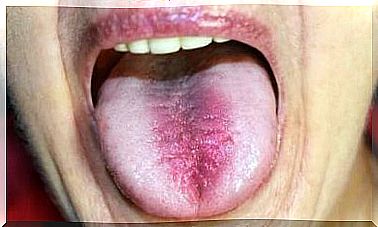Different Colored Eyes: Is There To Worry?

Noticing eyes of different colors is a rare and alarming phenomenon in any case. The eyes are among the most important and showy parts of the face, an organ to which all our attention goes.
There are those who try to change the color of the iris with contact lenses or other procedures, but when this happens unexpectedly, care must be taken. Often it is a symptom of a pathology, although in other cases it is to be considered a benign alteration.
When this happens, it is always important to have your eyes examined by a specialist. Let’s see what are the main causes.
Different colored eyes: why?
At birth, the eye color is usually blue-gray. This shade will not necessarily be maintained for the rest of life. The opposite usually happens.
Changing eye color is normal during the first few months of life because babies have not yet developed the pigment that gives the iris its color. As they grow older, the eyes acquire their final hue.
Nonetheless, a change in eye color in adulthood could be an alarming situation. In many cases there is an underlying disease. Here are the most common causes:
Freckles
Before we start talking about why you may notice different colored eyes, it is important to explain what melanin is. It is a pigment found in the skin and eyeballs. It is what determines the color of the iris and skin.
This substance is produced by special cells called melanocytes. The fact that these cells are found in the skin and eyes explains why freckles or moles can appear in these spots. Freckles can also appear on the iris; in this case they are called ocular nevi.
They are very similar to skin moles and consist of benign formations produced by melanocytes. When they appear around the retina, they are called choroidal nevi.
As with freckles or skin moles, ocular nevi can also appear suddenly. This is one of the most common causes of eyes changing color.
The problem is that although they are typically benign, they are at risk of becoming malignant. That is, they can lead to melanoma, a much more aggressive tumor with a greater risk of compromising vision.
According to a study published in Recent Results in Cancer Resaerch, ocular melanoma is infrequent. However, it is estimated to affect nearly 2,000 people each year in the United States.

Lisch nodules
Lisch nodules are small benign tumors 1 to 2 mm long. They form on the iris and appear as bumps that typically do not affect vision.
According to an article published in the Revista Mexicana de Oftalmología , it is the most frequent manifestation of neurofibromatosis, a disease of genetic origin that leads to the formation of tumors in the nervous tissue.
They can appear anywhere: peripheral nerves, spinal cord, or even the brain. Although they are mostly benign, they cause a range of symptoms and are not without the risk of becoming malignant.
It is a disease that is usually diagnosed in childhood. Like intraocular nevi, Lisch nodules damage vision, as well as cause changes in eye color.
Fuchs heterochromic iridocyclitis
It is a rare disease. According to the Orphanet platform, its prevalence is between 1 and 9 people per million. It affects young adults and causes changes in the color of the eyes, to be exact one becomes clearer.
The cause is unknown although some sources link it to the herpes simplex, rubella or shingles virus. This pathology usually causes symptoms such as floaters, small spots in the visual field, similar to floating flies. It can also lead to cataracts and glaucoma.
Iridocorneal endothelial syndrome
It causes swelling of the cornea, glaucoma and changes in the iris. In the last two cases, the eyes of different colors are noticed. Some cells of the cornea migrate to the iris, causing the iris and pupil to deform.
Furthermore, this cell migration alters the normal circulation of fluid inside the eye. As it builds up, pressure inside the bulb increases, causing glaucoma. The most common symptoms are blurred vision, changes in eye color, and sometimes pain.
Pigment dispersion syndrome
Normally, the pigment that gives the eye its color is found in the back of the iris. In some people, however, the iris has a different structure and rubs against other parts of the eye. This causes the pigmentation to be released gradually, settling in other areas of the eye.
In this case, the reaction may be similar to what is described in the previous section. The pigment can obstruct the circulation of intraocular fluid. It is therefore possible for glaucoma to develop, as well as causing changes in eye color.

Different colored eyes following trauma
Trauma is another common cause of eyes changing color. This can be a wound, a sharp blow to the face, or any agent capable of damaging the blood vessels of the eye.
This type of injury usually impairs vision, doubling it or decreasing its quality. Furthermore, sensitivity to light is common. An extravasation of blood into the tissues is at the basis of the phenomenon.
Noticing different colored eyes is always a reason for an eye examination
Any changes affecting the color of the eyes should be evaluated by the ophthalmologist since, as we have seen, they could be a symptom of an eye disease. The risk is to suffer permanent damage to the sight.
If in doubt, do not hesitate to consult the specialist. The eyes are very delicate organs: they require special care and attention.









